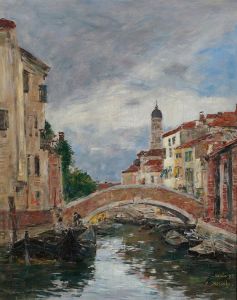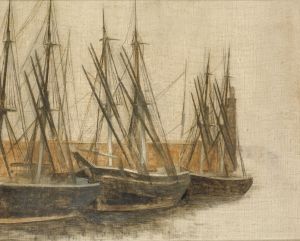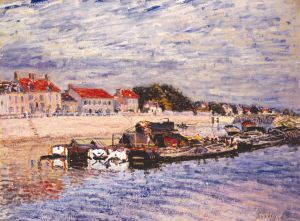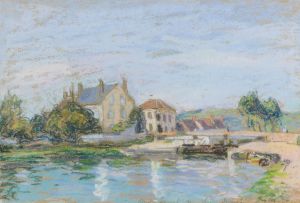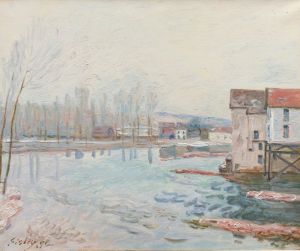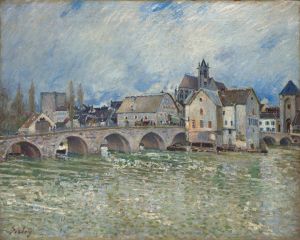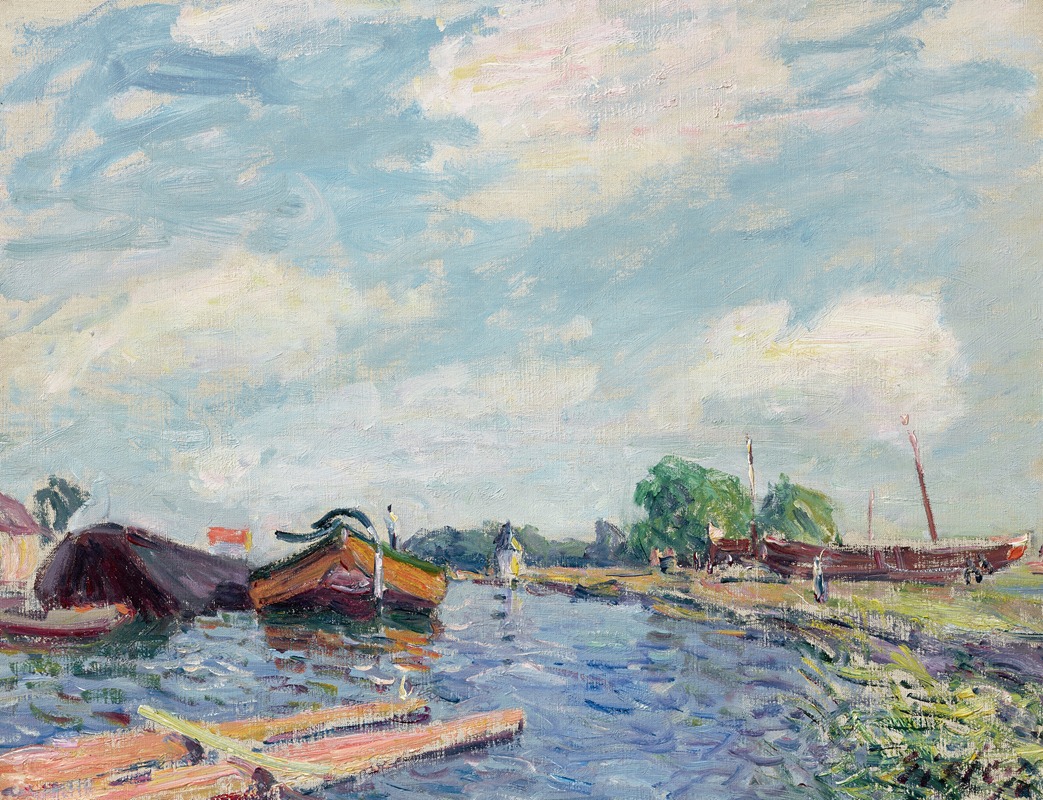
Canal du Loing à Saint-Mammès
A hand-painted replica of Alfred Sisley’s masterpiece Canal du Loing à Saint-Mammès, meticulously crafted by professional artists to capture the true essence of the original. Each piece is created with museum-quality canvas and rare mineral pigments, carefully painted by experienced artists with delicate brushstrokes and rich, layered colors to perfectly recreate the texture of the original artwork. Unlike machine-printed reproductions, this hand-painted version brings the painting to life, infused with the artist’s emotions and skill in every stroke. Whether for personal collection or home decoration, it instantly elevates the artistic atmosphere of any space.
"Canal du Loing à Saint-Mammès" is a painting by the renowned French Impressionist artist Alfred Sisley. Created in 1885, this work exemplifies Sisley's dedication to capturing the serene and picturesque landscapes of rural France. Sisley, who was born in Paris to British parents in 1839, is celebrated for his ability to depict the subtle nuances of light and atmosphere in his landscapes.
The painting portrays the Canal du Loing, a waterway in the Île-de-France region, specifically in the town of Saint-Mammès. This area is located at the confluence of the Loing and Seine rivers, providing a rich subject for Sisley's exploration of water, reflections, and the interplay of light. The canal itself was an important commercial route during the 19th century, contributing to the economic vitality of the region.
In "Canal du Loing à Saint-Mammès," Sisley employs his characteristic loose brushwork and a palette dominated by soft blues, greens, and earthy tones. The composition is tranquil, with the canal stretching into the distance, flanked by trees and modest buildings. The sky, a significant element in many of Sisley's works, is depicted with delicate, wispy clouds that suggest a calm, clear day. The reflections in the water are rendered with a keen eye for detail, capturing the rippling effects and the play of light on the surface.
Sisley's approach to this painting is consistent with the principles of Impressionism, a movement that sought to capture the fleeting effects of light and color rather than focusing on precise detail. His works often feature outdoor scenes painted en plein air, a technique that involves painting directly from nature to better capture the immediate impression of the scene.
The painting is part of Sisley's broader body of work that frequently explores the landscapes of the Île-de-France region, including the banks of the Seine and its tributaries. His dedication to these subjects reflects his deep appreciation for the natural beauty of the French countryside and his desire to convey its tranquility and charm.
"Canal du Loing à Saint-Mammès" is housed in the Musée d'Orsay in Paris, a museum renowned for its extensive collection of Impressionist and Post-Impressionist masterpieces. The painting is a testament to Sisley's skill in capturing the essence of rural France and his contribution to the Impressionist movement.
Alfred Sisley remained relatively underappreciated during his lifetime compared to some of his contemporaries, such as Claude Monet and Pierre-Auguste Renoir. However, his work has gained significant recognition posthumously, and he is now regarded as one of the foremost landscape painters of the Impressionist era. His ability to convey the subtle beauty of the natural world continues to resonate with audiences today, making "Canal du Loing à Saint-Mammès" a cherished piece within his oeuvre.









